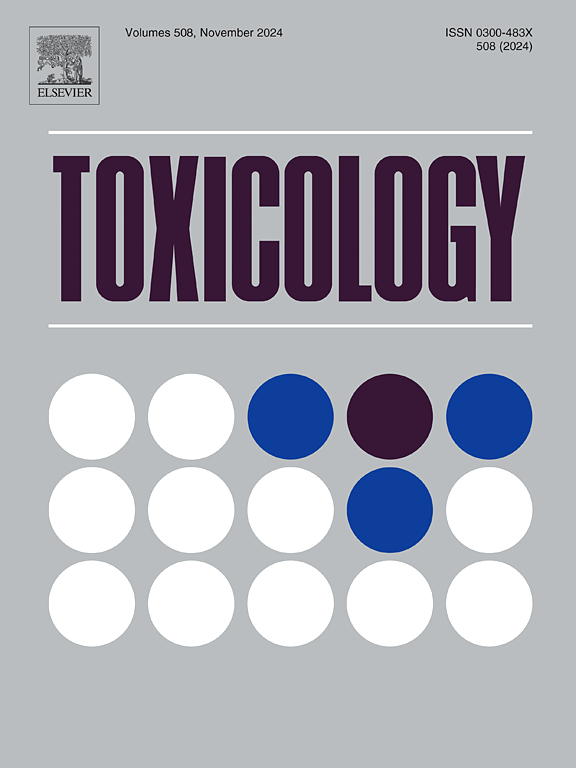Utilization of the CometChip assay for detecting PAH-induced DNA bulky adducts in a 3D primary human bronchial epithelial cell model
IF 4.6
3区 医学
Q1 PHARMACOLOGY & PHARMACY
引用次数: 0
Abstract
Polycyclic aromatic hydrocarbons (PAHs), which are formed during incomplete combustion of organic materials, may cause cancer through DNA damage mediated by formation of bulky DNA adducts from PAH reactive metabolites. The airway epithelium is a primary route of exposure for inhaled PAHs, and primary human bronchial epithelial cells (HBECs) in monolayer or organotypic cultures offer a more realistic testing scenario compared to traditional cell lines. However, lack of knowledge about their capacity to mediate DNA damage through generation of reactive chemical intermediates limits their use in quantitative studies for toxicity assessment or predictive modeling compared to in vivo studies. In this study, we explored the capacity of monolayer HBECs to generate DNA damage from metabolic activation of benzo[a]pyrene (BAP, 0.001 – 1 µg/mL, 24 h) using the high-throughput CometChip assay in comparison to HepG2 and MEF cells, as positive and negative metabolic controls, respectively. The CometChip assay was further adapted to evaluate DNA damage in HBECs cultured at the air-liquid interface (ALI) exposed to BAP (0.04–1.14 µg/cm2, 24 h). Monolayer and ALI-HBECs displayed a statistically significant increase in DNA damage from BAP exposure with repair trapping agents in a dose-dependent manner similar to the response from HepG2 cells. Monolayer HBECs also showed a greater sensitivity to DNA damage compared to ALI-HBECs, which correlated with induction of CYP1A1 activity at similar exposure conditions. Results from the CometChip assay were also observed at lower BAP concentrations compared to CYP1A1 activity, cytotoxicity, or barrier integrity disruption demonstrating the sensitivity of the CometChip assay.
利用CometChip检测三维原代人支气管上皮细胞模型中多环芳烃诱导的DNA大体积加合物
多环芳烃(PAHs)是在有机材料不完全燃烧过程中形成的,它可能通过多环芳烃反应代谢产物形成大体积DNA加合物介导的DNA损伤而致癌。气道上皮是吸入多环芳烃的主要暴露途径,与传统细胞系相比,单层或器官型培养的原代人支气管上皮细胞(HBECs)提供了更现实的测试场景。然而,与体内研究相比,缺乏对它们通过生成反应性化学中间体介导DNA损伤的能力的了解,限制了它们在毒性评估或预测建模的定量研究中的应用。在这项研究中,我们利用高通量CometChip实验,探索了单层HBECs在代谢激活苯并[a]芘(BAP, 0.001 - 1 µg/mL, 24 h)下产生DNA损伤的能力,并将HepG2和MEF细胞分别作为阳性和阴性代谢对照进行了比较。CometChip试验进一步适用于评估暴露于BAP(0.04-1.14 µg/cm2, 24 h)的气液界面(ALI)培养的HBECs的DNA损伤。单层和ALI-HBECs显示,与HepG2细胞的反应类似,修复诱捕剂暴露于BAP后的DNA损伤呈剂量依赖性增加,具有统计学意义。与ALI-HBECs相比,单层HBECs对DNA损伤也表现出更大的敏感性,这与在相似暴露条件下诱导CYP1A1活性有关。与CYP1A1活性、细胞毒性或屏障完整性破坏相比,在较低BAP浓度下,CometChip检测结果也显示出CometChip检测的敏感性。
本文章由计算机程序翻译,如有差异,请以英文原文为准。
求助全文
约1分钟内获得全文
求助全文
来源期刊

Toxicology
医学-毒理学
CiteScore
7.80
自引率
4.40%
发文量
222
审稿时长
23 days
期刊介绍:
Toxicology is an international, peer-reviewed journal that publishes only the highest quality original scientific research and critical reviews describing hypothesis-based investigations into mechanisms of toxicity associated with exposures to xenobiotic chemicals, particularly as it relates to human health. In this respect "mechanisms" is defined on both the macro (e.g. physiological, biological, kinetic, species, sex, etc.) and molecular (genomic, transcriptomic, metabolic, etc.) scale. Emphasis is placed on findings that identify novel hazards and that can be extrapolated to exposures and mechanisms that are relevant to estimating human risk. Toxicology also publishes brief communications, personal commentaries and opinion articles, as well as concise expert reviews on contemporary topics. All research and review articles published in Toxicology are subject to rigorous peer review. Authors are asked to contact the Editor-in-Chief prior to submitting review articles or commentaries for consideration for publication in Toxicology.
 求助内容:
求助内容: 应助结果提醒方式:
应助结果提醒方式:


